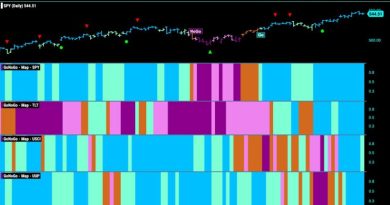Is this an Economic Bubble or Investor Frenzy?
The recent surge in stock market valuations has raised concerns among investors and experts alike, leading to debates about whether we are witnessing a market bubble or investor mania. While both phenomena involve overvaluation and excessive enthusiasm from market participants, there are important distinctions to be made between the two concepts.
A market bubble typically emerges when asset prices significantly exceed their intrinsic value, driven by speculative buying and irrational exuberance. In a bubble, investors disregard fundamental factors such as earnings, dividends, and economic indicators, focusing instead on price momentum and the fear of missing out on potential gains. The rapid escalation of prices fuels further buying, creating a self-reinforcing cycle that eventually leads to a sudden and sharp decline in asset values.
On the other hand, investor mania is characterized by a collective frenzy or euphoria that drives prices to unsustainable levels. This behavior is often fueled by social media, news outlets, or other forms of mass communication that amplify the prevailing sentiment and encourage more investors to jump on the bandwagon. While manias can also lead to overvaluation and sharp corrections, they are driven more by herd mentality and emotional excitement than by pure speculation.
The current state of the market has raised concerns about the presence of both a market bubble and investor mania. Some argue that the extraordinary rise in stock prices, fueled by low interest rates and abundant liquidity, reflects a bubble that is bound to burst sooner or later. Others point to the widespread participation of retail investors, fueled by social media platforms like Reddit and TikTok, as evidence of investor mania that could exacerbate market volatility.
It is essential for investors to remain cautious and disciplined in the face of market exuberance. By focusing on fundamental analysis, risk management, and long-term financial goals, investors can mitigate the impact of market bubbles and investor manias on their portfolios. Diversification, asset allocation, and regular reevaluation of investment strategies are key components of a prudent approach to navigating volatile market conditions.
In conclusion, while the distinction between a market bubble and investor mania may seem subtle, understanding the underlying drivers and dynamics of each phenomenon is crucial for making informed investment decisions. By staying informed, adopting a rational mindset, and maintaining a long-term perspective, investors can better navigate uncertain market environments and avoid the pitfalls of excessive exuberance.




